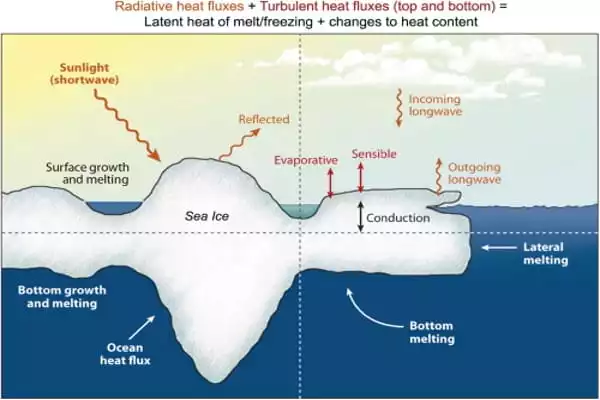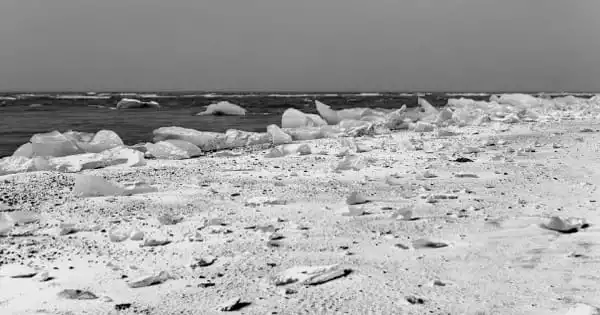According to a study led by researchers from Ohio University, the increase in sea ice surrounding Antarctica since 1979 is a unique feature of Antarctic climate since 1905 – an observation that paints a dramatic first-ever picture for weather and climate implications on the world’s southernmost continent.
Dr. Ryan Fogt’s study, published in Nature Climate Change, is the first to detail the extent of sea ice covering the whole continent over the previous century. Winds and temperatures, in particular, contribute to fluctuations in sea ice. Fogt is a Geography professor at the College of Arts and Sciences at OHIO.
Prior to the advent of satellite data in 1979, historical estimates of Antarctic sea ice were derived mostly via the lens of a few number of weather stations spread throughout the huge continent, human observation near the ice edges, and ice core and ocean sediment samples. These estimates, however, all have limits, as most were based on observing sea ice conditions in a restricted location or at a specific time of year.
The OHIO study, on the other hand, extends the trustworthy observations from satellite photography since 1979 back into the twentieth century by analyzing historical meteorological data from locations other than the Antarctic continent. The significant link between Antarctic sea ice and regional and large-scale climatic variability, documented through a network of 30 long-term temperature and pressure records across the Southern Hemisphere, is at the heart of Fogt’s statistical reconstruction model. This new study substantially increased the duration of observed data regarding the entire continent, rather than just a specific region, and provides a year-round view rather than an annual average.
This reconstruction of Antarctic sea ice through the twentieth century provides detail not only for each season, but also for diverse places across Antarctica. When we add it all up, we have the first complete estimate of total Antarctic sea ice extent (how far the sea ice extends from the continent) back through the twentieth century.
Dr. Ryan Fogt
“This reconstruction of Antarctic sea ice through the twentieth century provides detail not only for each season, but also for diverse places across Antarctica. When we add it all up, we have the first complete estimate of total Antarctic sea ice extent (how far the sea ice extends from the continent) back through the twentieth century” Fogt stated.
Regime Shift: Sea increases since 1979, and sudden declines
The most striking element of the new data is what Fogt refers to as a regime shift. “The short time span given by satellite measurements of Antarctic sea ice is truly exceptional. It is the only time since the beginning of the twentieth century when total sea ice has increased in all seasons” Fogt stated. “Over that satellite era, we have a statistically significant positive trend. Even more astounding, these gains since 1979 have been accompanied by long-term decreases in Antarctic sea ice throughout the early and middle twentieth centuries.” Similarly, ice core studies show regional elements of the decline during much of the twentieth century.
The satellite data begin in 1979, during a period when sea ice was declining throughout the first half of the twentieth century. Fogt is particularly interested in recent rises in sea ice, as well as an anomaly in 2016 and 2017 when sea ice unexpectedly fell, only to rebound by mid-2020. Sea ice conditions surrounding Antarctica are once again below average in early 2022.

Unlike the receding areas of the West Antarctic Ice Sheet, Antarctic sea ice, according to Fogt, is ice that floats on the ocean and melts and reforms as the seasons change. Because it floats in the ocean, the melting and refreezing have little effect on sea level.
“2016 was a year that really astonished all of us, because the ice around Antarctica had been rising, albeit slowly,” Fogt remarked. “And then, suddenly, it plunged, and it was this huge loss that we had never seen in the observation record, and it stayed below average all the way up to mid-2020. Then it kind of returned to normal, but only for a little while.”
“These latest Antarctic sea ice extent reconstructions continue to illustrate that there are changes in our climate system that we haven’t seen in nearly 150 years. The causes of these shifts – the drop in the twentieth century, the increase after 1979, and the abrupt decline in 2016 – are all unknown. However, we’ve recently witnessed something quite dramatic “He stated. “Our new data collection has the potential to significantly improve our understanding of what causes changes in Antarctic sea ice over far longer durations. That is the effort that we, as a scientific society, must begin right away.”
Early in his career, Fogt undertook fieldwork in Antarctica and stated that he knew in graduate school that he intended to devote his life investigating the continent. And he adores penguins.
“I indicated that sea ice has no effect on sea level rising. So, why are we worried about the sea ice around Antarctica? For starters, it has an impact on ecosystems. Antarctic penguins and seals are similar to polar bears in the Arctic. They are heavily dependent on the amount of sea ice. Sea ice changes are also linked to ocean circulation, which includes the creation of thick water that can sink to the ocean floor. Changes in the seas around Antarctica can have far-reaching consequences “Fogt stated.





